There is a continuing push within the healthcare ecosystem toward patient-centric care, population health, and cost and value. These three areas dramatically impact the industry across myriad operational and executional channels.
Triple Aim, an initiative that serves as the foundation for organizations to successfully navigate the transition from a focus 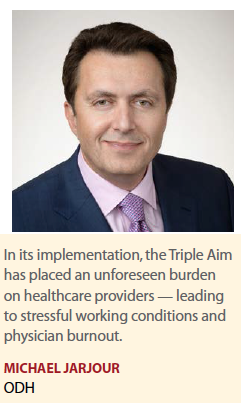 on healthcare to optimizing health, has been described as an ongoing process of collaborative learning. For its partners committed to large-scale system change, incremental success will depend on scaling up and disseminating the learnings from individual projects and initiatives.
on healthcare to optimizing health, has been described as an ongoing process of collaborative learning. For its partners committed to large-scale system change, incremental success will depend on scaling up and disseminating the learnings from individual projects and initiatives.
Experts says continued success in the years ahead will come from building on what has already been achieved.
“We are seeing a greater focus on the patient among many healthcare stakeholders and a shift toward a more patient-centric definition of value," says Jennifer Fillman, VP, general manager, Cardinal Health Specialty Solutions. “For example, the FDA is encouraging more use of patient-reported outcomes in clinical trials and Phase IV studies; manufacturers are placing more emphasis on designing wrap-around services for patients to support chronic disease products; and payers are taking a more holistic view of the patient."
Experts say value-based care has evolved from a concept to what is recognized now as the optimal way to balance the cost of care while driving towards the best health outcomes.
The Triple Aim was originally aspirational, rather than actionable; when the Affordable Care Act started aligning incentives with outcomes, the Triple Aim got “teeth," says Randy Isaacson, senior VP, health systems solutions, Discovery USA.
“Today it drives successful strategies for payers, providers, and manufacturers," he says. “Success depends on how well you measure up to the goals of the Triple Aim. The challenge across the board is re-shaping a wide range of healthcare business models to succeed in a value-based environment. Fundamentally, it requires that we offer a better healthcare ‘experience rather than a ‘product.’"
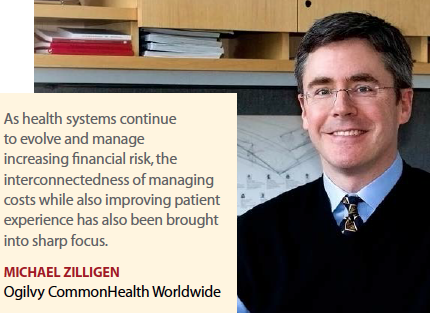 After the Triple Aim became the established foundation for reform in the American healthcare system, the focus transitioned into developing execution strategies to achieve the initiative’s objectives, says Dan Stevens, Ph.D., principal product marketing manager, health and life sciences, SAS.
After the Triple Aim became the established foundation for reform in the American healthcare system, the focus transitioned into developing execution strategies to achieve the initiative’s objectives, says Dan Stevens, Ph.D., principal product marketing manager, health and life sciences, SAS.
“As organizations began to look into implementation plans and, more specifically, how to improve their population’s health while reducing the financial impact, it became apparent that a focus on reducing the impact of chronic disease would be the most efficient path to success," he says. “Unlike attempts of the 1990s where reducing access to care was the strategy to reduce costs, the modern population health approach encourages and enhances access to care through a coordinated care-centric model overseen by the primary care resource. The key includes both the treatment of existing chronic conditions and the early intervention of emerging chronic conditions to manage them before they become severe. Using this focused approach, health improvement for those who truly need care can be achieved."
The Triple Aim in its initial years focused more on population health, and the ACA has thus far focused mostly on accessibility. More recently, the focus has shifted toward cost reduction — either outright pressure on prices, or to shift risk to incentivize cost reduction by healthcare providers, says Pratap Khedkar, Ph.D., managing principal, ZS.
“Consolidation among providers and payers was supposed to reduce costs and improve population health — but has not done so due to fundamental disconnects in the definition of value and cost between the various stakeholders in healthcare," he says.
Dr. Khedkar says efforts to analyze value and discuss it rationally are stymied by conflicting interests.
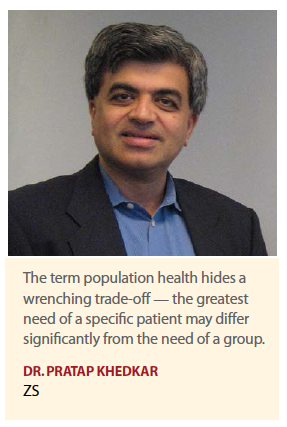 “First, appropriate time horizons do not match," he says. “The PBM thinks short term, the commercial payer thinks medium term, whereas the physician looks at long-term health. Metrics are also misaligned. The patient values patient-reported outcomes, which are hard to measure in controlled trials. The PBM focuses only on drug costs, not total health cost. Pharma and the KOL value innovation, but is the payer willing to pay a high premium? Also, the term ‘population health’ hides a wrenching trade-off — the greatest need of a specific patient may differ significantly from the need of a group. Lastly, the United States has avoided debating a key question — how much is the added health benefit or an extra year of life worth?"
“First, appropriate time horizons do not match," he says. “The PBM thinks short term, the commercial payer thinks medium term, whereas the physician looks at long-term health. Metrics are also misaligned. The patient values patient-reported outcomes, which are hard to measure in controlled trials. The PBM focuses only on drug costs, not total health cost. Pharma and the KOL value innovation, but is the payer willing to pay a high premium? Also, the term ‘population health’ hides a wrenching trade-off — the greatest need of a specific patient may differ significantly from the need of a group. Lastly, the United States has avoided debating a key question — how much is the added health benefit or an extra year of life worth?"
The Quadruple Aim
The Triple Aim has been adopted by hospital and health systems as a framework for major provisions in the implementation of the Patient Protection and Affordable Care Act, says Michael Jarjour, CEO, ODH.
“This aim takes the ideas of improving safety and quality and puts them into an understandable context — it is a way of uniting healthcare institutions in a framework for improving health quality, value, and costs," he says. “However, in its implementation, the Triple Aim has placed an unforeseen burden on healthcare providers — leading to stressful working conditions and physician burnout. There is increasing recognition of a Quadruple Aim — with the addition of a fourth goal, that of improving the work life and health of healthcare providers and other clinical and supportive staff. Addressing this fourth goal is something that health systems that are focused on the first three goals should prioritize in order to be successful at achieving the ends of the original Triple Aim."
The biggest change in recent years is that the Triple Aim has evolved to become the Quadruple Aim, agrees Catherine Mayone, executive VP, general manager at Publicis Health and Sapient Health.
“Along with massive consolidation and integration happening in healthcare delivery, we now recognize that a Fourth Aim — provider satisfaction — is equally important to realizing the Triple Aim," she says. “It’s really about ensuring that employee and stakeholder engagement is optimized in the care of patients, and like any industry, this added dimension will translate into the best experience and outcomes for patients."
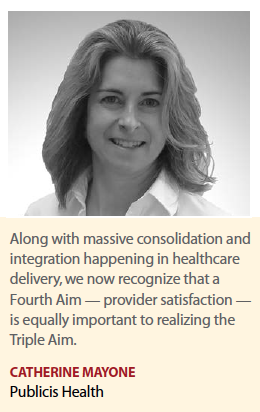 In fact, a recent survey conducted by The Physicians Foundation indicated continued pressure on physicians to keep up with demand for their services, as more than 80% of doctors report being overextended or at full capacity.
In fact, a recent survey conducted by The Physicians Foundation indicated continued pressure on physicians to keep up with demand for their services, as more than 80% of doctors report being overextended or at full capacity.
Yet, in the same survey, 78.6% of physicians ranked their relationships with patients as the most satisfying factor within the medical practice.
“If we can help physicians build better relationships with their patients, we will impact both the Triple Aim and the Fourth Aim," Ms. Mayone says.
Achieving Success in Population Health
Population health is hard to tackle in the macro, Ms. Mayone says.
“We can identify the trends and where we need to focus, but to change population health, we have to improve individual health at the micro level," she says.
“Individuals all have unique motivations, so we need to devise mass-customization programs that can be scaled but also tailored to individual patient needs," Ms. Mayone says. “We are starting to see many new relationship management technology solutions that have been deployed in other industries that are now being deployed in healthcare."
To be successful, she says, the entire healthcare value chain needs to partner together. Pharmaceutical companies have great insights on what motivates patients and where the breakdown happens between patient and physician interactions as well as patient support programs that improve outcomes.
“These beyond-the-pill services and programs can be of great value in making the Triple Aim successful in the coming years," she says.
For improvement of population health, improvement of patient experience and reduction of the per-capita cost of care to be successful, there needs to be a system in place that demonstrates efficacy of the care provided, as well as improve the care provided, says Sherry Korczynski, senior VP of marketing, Eagle Pharmaceuticals.
“The biggest challenge is getting the various stakeholders to coordinate in achieving the goals of Triple Aim because many of these key players have worked independently," she says. “There is a lack of coordination of care and interoperability of 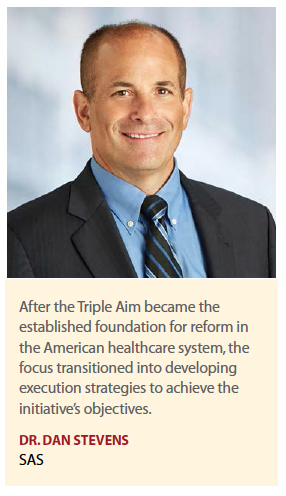 systems and decision making practices. None of this can happen without the integration of data across all stakeholders — patients, payers, providers. I think there will be more collaboration between healthcare stakeholders that are coming from separate organizations to address the challenges of Triple Aim. For example, there will be incentives put into play across all stakeholders that will result in better outcomes. How care decisions are made and patient outcomes are measured will also be addressed, and some type of scoring system will be utilized."
systems and decision making practices. None of this can happen without the integration of data across all stakeholders — patients, payers, providers. I think there will be more collaboration between healthcare stakeholders that are coming from separate organizations to address the challenges of Triple Aim. For example, there will be incentives put into play across all stakeholders that will result in better outcomes. How care decisions are made and patient outcomes are measured will also be addressed, and some type of scoring system will be utilized."
Ms. Korczynski says cost has become the critical factor in determining access to care and treatment options for patients and provider choice of care and treatment.
“The most-asked question is whether the cost of a treatment provides a positive outcome," she says. “If the treatment didn’t result in a positive outcome, then was it worth the cost? That can only be achieved if there are ways to measure the expected or desired result against the cost of a particular treatment and the costs of additional treatments that may not have been required had a different treatment choice been made. While this complex situation is not always predictable, given individual patient response to treatments, there are algorithms and outcomes data based on physician experience and the outcomes of similar types of patients which can help guide a more personalized approach to medical care, hopefully resulting in lower overall costs and better treatment choice and patient experience of care."
Mr. Jarjour says technology is one key way to facilitate this realization of improved efficiencies.
“New technologies can bring together data, and improve data use and insights through advances in data analytics, risk adjustment modeling and population management," he says. “Technology also can be used to enhance efficiencies through improved ease of delivery of these insights and value to payers, providers and patients through user-friendly software and reporting. “
Mr. Jarjour says, currently, data for patients and providers is fragmented and not well integrated leading to inefficiencies and administrative burdens.
“In the coming years, the implementation of currently available, new technologies can help to better integrate or bring together disparate sources of data, including social determinants of health, to view patient populations more horizontally as well as longitudinally," he says.
“Integrated data can then be analyzed to predict current and future patient costs, and to derive insights on key variables which are impacting health, wellness and costs."
He says such analyses and data integration can identify the patient and provider populations that can be impacted by interventions — this includes identifying waste and inefficiencies in the system, while targeting the right kinds of activities for improving patient health and reducing costs, for example, identifying care gaps in certain patient populations, such as the need for well care visits, or colon/breast cancer screenings.
EMR/EHR are Critical for Success
Since the onset of the Affordable Care Act, the intent of the Triple Aim of healthcare has remained a constant and primary focus of healthcare providers and policy makers, says Michael Zilligen, president of Ogilvy CommonHealth Payer Marketing and Ogilvy Healthworld Payer Marketing, both part of Ogilvy CommonHealth Worldwide.
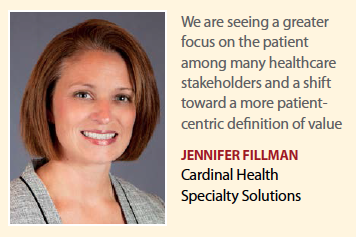 “However, the implementation of Triple Aim has evolved markedly," he says. “For example, as far back as 2009 with the Health Information Technology for Economic and Clinical Health (HITECH), health information technology such as electronic health records (EHR) could help achieve the Triple Aim."
“However, the implementation of Triple Aim has evolved markedly," he says. “For example, as far back as 2009 with the Health Information Technology for Economic and Clinical Health (HITECH), health information technology such as electronic health records (EHR) could help achieve the Triple Aim."
Today, Mr. Zilligen says, adoption of EHR in the hospital and ambulatory care sectors is widespread. Following the trajectory of any successful diffusion of technology into any system, the focus is now on optimization of health information exchange and interoperability.
“A key change is the new focus on facilitating health information exchange among providers," he says. “Providing the interconnectivity and exchange of critical information will give providers the tools and data needed to facilitate communication, training, and incentives for advancing care. In addition to leveraging HIT, the role of big data and how healthcare stakeholders are using the information to work for the objectives of the Triple Aim has evolved as well. As health systems continue to evolve and manage increasing financial risk, the interconnectedness of managing costs while also improving patient experience has been brought into sharp focus, with quality and performance metrics."
Dr. Stevens says Triple Aim success will be dependent on the effective management, analysis, and application of health data in the near future.
“Now that providers and health systems have developed or are developing EMR systems, the current challenge is how to leverage these resources to improve health and lower costs," he says. “This starts with the ability to share data so that they are informative, actionable, and still compliant with patient privacy laws. Clearly, to achieve value from these data, an organization must invest in the resources to extract, analyze and share the results with the providers in an interpretable and actionable manner. Without these changes, the investments made into these EMR systems will not be realized and, as a result, the Triple Aim goals will not be achieved."
Mr. Zilligen says to ensure population health optimization and a favorable patient experience, integration of systems, facilitation of health information exchange, and a comprehensive approach to patient services will be important.
To make further progress, early adopters of EHRs could share their insights, success stories, and protocols. Creating an environment of competition among vendors will lead to enhancements of EHR systems, improved health information exchange and bring about development of EHR models to support population management could result.
But, Mr. Zilligan says, more than technology will be needed to improve healthcare delivery and achieve the Triple Aim.
“To improve care and drive down costs, providers will need to take on greater financial risk for the cost of care — along with payment policies incenting selection of lower-cost generics when appropriate, and focus on prevention and proactive care management," he says. (PV)
~~~~~~~~~~~~~~~~~~~~
Triple Aim Insights
 Dr. Gregory Critchfield
Dr. Gregory Critchfield
Sera Prognostics
The Triple Aim initiative articulates requirements for the delivery of meaningful medical care to simultaneously improve health and decrease the costs of healthcare delivery.
 Ashik Desai
Ashik Desai
ContextMedia:Health
It is critical that we keep improved patient outcomes as our true north. While technology will change beyond a context that we can understand today, what won’t change is the desire to live healthier lives.
~~~~~~~~~~~~~~~~~~~
Patient Engagement is Key
Alyson Connor
MicroMass Communications
Instead of the typical information-based, patient support offerings, pharma should include strategies that build patient motivation and skills.
Nareda Mills
Ashfield Clinical
Patient nonadherence is one of the biggest challenges to our healthcare system in terms of cost and value.
Industry experts says pharma can take a more active role to help care teams engage patients at a deeper level in treatment decisions. This can lead to greater adherence and improved patient experience on therapy.
Instead of the typical information-based, patient support offerings, pharma should include strategies that build patient
motivation and skills, says Alyson Connor, president MicroMass Communications.
“Messaging and tips simply won’t cut it," she says. “Pharma should help patients apply problem solving strategies and positive coping skills to tackle the real-world barriers to their treatment plans. These interactive skill building and digital strategies can be worked into existing support programs. Pharma has an opportunity to be a vital partner in working toward the Triple Aim."
Ms. Connor says research shows that patient engagement strategies result in improved health outcomes, higher patient
satisfaction, and a reduced healthcare cost.
“These strategies help providers build the skills necessary to engage patients and help them learn to better self-manage their condition," she says. “Pharma is already investing in marketing support, but there’s an opportunity to drive commercial success and impact positive outcomes by focusing on patient engagement."
Patient nonadherence is one of the biggest challenges to our healthcare system in terms of cost and value, says Nareda Mills, senior VP, clinical services, Ashfield Clinical.
“It drives costs up, and patient perceptions of value and product efficacy down," she says. “Numerous studies have shown that as high as 50% of patients don’t take their medicines as prescribed. To give you an idea of what that means, the total potential savings from adherence and related disease management could be as much as $290 billion annually.
Patient-support programs can increase value and help contain costs by improving adherence, reducing readmissions, and
achieving better outcomes."
Ms. Mills says another challenge is over-reliance on expensive care options — for example patients who use the ER when they can’t get into see their primary care physician.
“Mitigating this driver of low value will require providing less expensive options for patients in these circumstances," she says. “Additionally, unhealthy behaviors present a cost/value challenge, because they often lead to chronic illnesses that are expensive to treat. This is an issue that we, as a society, can and should address through proactive healthcare education programs."


















